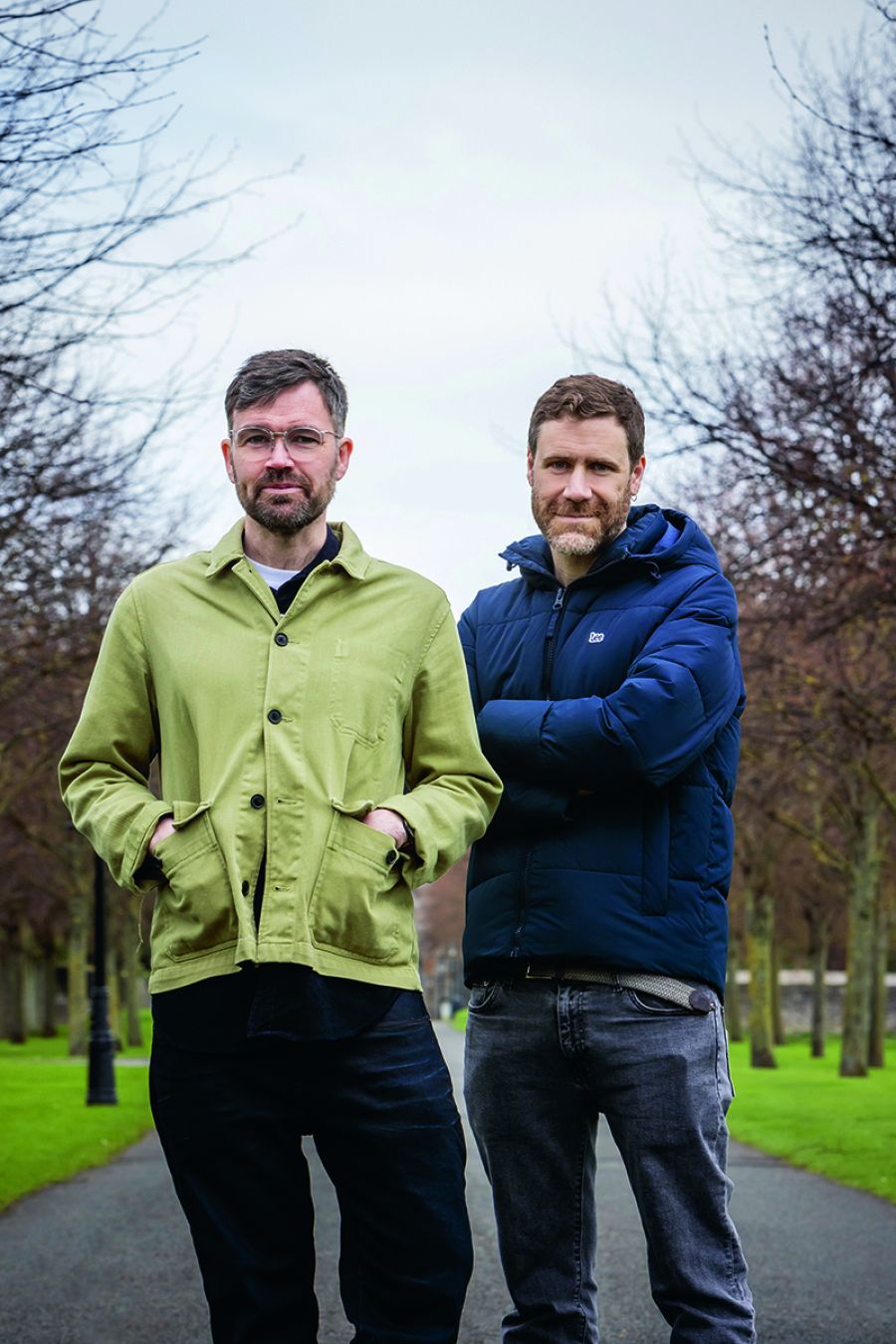Dead Centre: Unser Seelenort … Das Irish Museum of Modern Art in Dublin - Deutsche Oper Berlin
From Libretto #9 (2023)
Dead Centre: Our place of serenity … The Irish Museum of Modern Art in Dublin
Directors Bush Moukarzel and Ben Kidd go to the parklands around a Dublin museum to muse on the tension between reality and our perception of it – for them one of the pivotal questions of IL TEOREMA DI PASOLINI
Our private place of peace is the Irish Museum of Modern Art in Dublin. It’s in the Kilmainham area, in the south-western part of the city, a little way off from the touristy centre. We both happen to live around the corner, a couple of minutes down the road, so the Museum is a bit like a neighbourhood drop-in centre. The building itself is in the middle of a big park and looks quite formidable from a distance, approaching from one of the boulevards. It’s an early Neoclassicist structure from the 17th century and was once the Royal Hospital Kilmainham, constructed to tend to wounded and invalided soldiers, so it’s closely linked to the military, like so much in Ireland. With its four grey wings arranged around a quadrangle it looks a bit sombre on a typical overcast Dublin morning. And despite being off the beaten tourist track, it attracts coachloads of tourists and is one of the most-visited sights in the city.

For us, though, it’s just the museum round the corner with the big park. We don’t come here much. When we do, it’s usually to see some exhibition or other, but it’s not first and foremost about looking at art. It’s the location per se, the park with its formal baroque garden and the straight gravel paths leading up to the grey stone walls of the former military hospital, which allows us to unwind. It’s an oasis of quiet in the heart of Dublin and one of the few sites that has preserved its original perimeter and plot of land. So when you’re walking up to the building, it’s not hard to picture patients taking the air, back in an age when that was still considered to have medicinal value.
Bush walks his dog here every morning and we often plan our day over the phone at the same time. It might appear that we’re just strolling around on any old patch of grass, but it’s nice to think that a music festival is held here annually, that artists on grants are living on the premises and that the Museum is host to a fine collection of modern and contemporary art – because we, too, take inspiration from paintings and sculptures when designing stage sets. Sometimes it helps to imagine a single element of an artwork coming alive: the imagined movement sets the entire static gallery concept wobbling – which can trigger a very productive thought process.
Our private place of peace speaks to us on one level but also reflects a socio-economic attitude within the municipal council. To put it bluntly: we’re relieved that the Royal Hospital hasn’t been turned into a hotel or the park developed into freehold residential flats.
The site of the Irish Museum of Modern Art is also marked by the conspicuous lack of a component so typical of a western European city that we hardly notice it anymore: the solicitation to consume. As is so often the case, we don’t properly appreciate what we had until it’s suddenly no longer there and we’re forced to take new stock of our circumstances – even if only for a moment.
This altered perspective is also one of the core subjects of IL TEOREMA DI PASOLINI, the work we’re mounting in June at the Deutsche Oper Berlin. The composer, Giorgio Battistelli, has stayed quite close to Pasolini’s original book, in which an attractive young stranger inveigles himself into the household of a Milan industrialist and proceeds to seduce the assembled company, one by one and regardless of sex or social standing: mother, father, daughter, son and maid. The ordered bourgeois structures collapse and the familial system is disrupted beyond repair. The backdrop conveys the impression of a test laboratory, yet right up to the end it’s not clear what the actual theorem being tested here consists in. What is Pasolini hoping that his experiment will reveal?

We think that TEOREMA is mostly about smashing rulebooks that are no longer seen as such by the very people who comply with them. The industrialist’s family leads a middle-class existence studded with centuries-old aspirational rituals. It takes the arrival of an unpredictable variable in the form of a mysterious stranger to break the mould, someone to show the guinea pigs how wrong and damaging their class-conscious behaviour was and how deep the void behind those rituals. Funnily enough, it doesn’t take much for the stranger to set off a landslide; he delivers no long monologues, doesn’t try to win people over. Through his sensuality and the mere fact of his existence he alters their way of seeing things and tweaks their perspective on a familiar reality. A bit like the effect that our place of soulful serenity has on us – albeit in a much more radical way.





